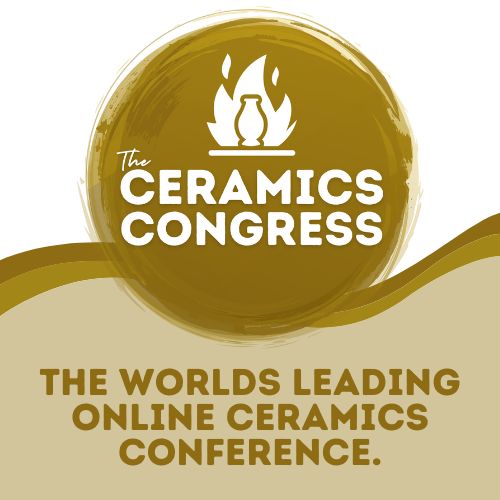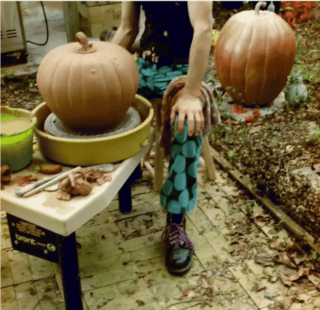
In the world of ceramics, we craft more than just pottery; we mold stories, emotions, and creativity into every one of our pieces. Yet, in this digital age, the art of ceramics needs more than just skilled hands. It requires a strong online presence to connect with a wider audience and foster lasting relationships. Enter the humble email newsletter, a powerful tool that has quietly transformed how ceramic artists share their passion with the world!
If you’re a ceramic artist seeking to bridge the gap between your studio and a global community of art enthusiasts, this blog is your key to understanding why email newsletters are an essential component of your practice. Join us as we explore how this simple yet effective communication medium can help you build a thriving artistic career while nurturing the bonds that make your creations resonate with people around the world.
A Quick Overview
In essence, an email newsletter is a regularly distributed email publication sent to a group of subscribers who’ve opted in to receive updates, information, or content from a particular sender or organization. These newsletters can serve various purposes and typically include a combination of text, images, links, and other multimedia elements. They’re a valuable communication and marketing tool for businesses, organizations, and individuals looking to stay connected with their audience, share valuable content, and achieve various goals, from increasing brand awareness to driving sales and engagement.
As a ceramic artist, you may have already found that it’s common for people to become repeat customers or collectors. They fall in love with your work, and the story you put behind it. Newsletters are a great way for you to further cultivate these connections, helping your practice grow.

Newsletter Benefits
Maintaining a regular newsletter comes with lots of benefits, so while it may seem a bit daunting at first (especially if you’re not too computer savvy) it is well worth the effort. We’ve outlined some of the main benefits below, to help you get motivated.
Direct Connection with Your Audience: Newsletters allow you to establish a direct line of communication with your audience. You can share your latest creations, studio updates, and upcoming events directly with your subscribers, ensuring that your most dedicated supporters stay informed.
Building a Community: Newsletters help you foster a sense of community among your followers. You can engage with your subscribers, respond to their feedback, and create a loyal fan base that feels personally connected to your work.
Showcasing New Work: Email newsletters provide a platform to showcase your latest ceramic pieces, exhibitions, and projects. This enables you to generate buzz and anticipation around your work, potentially leading to sales and increased exposure.
Marketing and Sales: Newsletters are an effective marketing tool. You can use them to promote your online store, art shows, workshops, or commissions, reaching a targeted audience interested in your work, which can boost your sales and revenue.
Establishing Authority: Regular newsletters can help you position yourself as an authority in the field of ceramics. By sharing your insights, techniques, and experiences, you can demonstrate your expertise and attract a following of aspiring artists or enthusiasts interested in learning from you.
What Exactly Does an Email Newsletter Look Like?
You’re probably already subscribed to a number of mailing lists, but perhaps haven’t consciously analyzed how they’re put together. If you’ve never prepared one before, it can be hard to know just where to start. To help you out, here are some key characteristics and components of email newsletters to consider.
Content: Email newsletters can contain a wide range of content, including news updates, articles, blog posts, product promotions, event announcements, educational resources, and more. The content is tailored to the interests and preferences of the subscribers.
Design: Newsletters are usually designed to be visually appealing and user-friendly. They often incorporate branding elements, logos, color schemes, and layout formatting to maintain a consistent and recognizable appearance.
Frequency: Newsletters are sent out on a regular schedule, such as weekly, monthly, or quarterly, depending on your strategy and the preferences of your subscribers.
Subscription: Subscribers voluntarily sign up to receive newsletters by providing their email addresses through a website, in-person signup form at a fair or studio event, or another opt-in method. According to the laws of most countries, they must also have the option to unsubscribe at any time.
Personalization: Effective newsletters often use personalization features to address recipients by their names and tailor content based on their preferences and behavior. Personalization enhances engagement and relevance.
Call to Action (CTA): These encourage subscribers to take clear specific actions, such as visit a website, make a purchase, attend an event, or share the newsletter with others.
Analytics: Many email marketing platforms provide analytics tools to track the performance of newsletters. These analytics include open rates, click-through rates, conversion rates, and other metrics that help you gauge the effectiveness of your email campaigns.
Compliance: Email newsletters must comply with regulations such as the CAN-SPAM Act in the United States and the General Data Protection Regulation (GDPR) in the European Union to ensure that recipients have consented to receiving emails and have the option to opt out.

How to Get Started
As you’ve now gathered, starting an email newsletter involves several steps to ensure that you can effectively create, manage, and distribute your content to your target audience.
To begin with, you’ll need to define your purpose and audience. What’s the primary goal of your newsletter? Are you looking to inform, educate, promote products or exhibitions? Or are you looking to engage your audience in some other way? Who are the people you want to reach with your newsletter? Are they gallerists or collectors? General art lovers? Are they local or from around the world? Having a clear picture of this will give your newsletters a sense of direction, helping you get the most out of them.
Choosing an Email Marketing Platform
Email marketing platforms, also known as email marketing services or email marketing software, are specialized online tools designed to help you create, manage, send, and analyze email marketing campaigns. These platforms offer a wide range of features and functionalities to streamline the email marketing process. In a nutshell, they take out the stress of creating newsletters so you can spend less time on the computer, and more time in the studio!
Email marketing platforms provide user-friendly editors to design and create email campaigns. They often offer pre-designed templates, drag-and-drop builders, and customization options for text, images, and layout. They also allow you to manage your email list by adding and segmenting subscribers based on various criteria, such as demographics, behavior, and preferences. This allows you to send targeted and relevant content to different groups within your audience, which increases interaction with your message.
These are just a few of the features you’ll find in such platforms. They may also include functions for sequenced messages, customized messages, analytics, and integration with other marketing software you’re using.
Before deciding on a marketing platform, consider what features will be most valuable for your ceramic business, then compare your options against these requirements. There are tons of options out there, including MailChimp, ConstantContact, Brevo (formerly Send In Blue), and Hubspot, to name just a few. Also keep an eye out for ones that offer a free trial. This will allow you to test-run the software to see if you like the interface and if it works as you expected.
Email marketing platforms typically work as subscription services, so the price will factor into your decision. You can expect monthly subscriptions to cost between $15 for basic plans, all the way up to $300 for premium plans. Plan tiers vary in terms of the number of messages you can send per month, the number of subscribers, as well as the analytic and support features available. We think you’ll find that basic or standard plans will meet the needs of your ceramic business.
It can usually take a few hours to a few days to fully set up a new email client account, especially if you want to send emails from your own custom address (due to having to update your DNS settings). Be sure to give yourself enough time, and always test your setup by sending emails to yourself, or a few close friends first.

Building Your Subscriber List
Once you’ve decided on an email marketing platform, it’s time to build your subscriber list. There’s little point in having a newsletter if you have no one to send it to, after all! Don’t worry if your audience is small at first, there are many ways you can help it grow.
The first step is to create a signup form and place it on your website, social media profiles, and other online platforms where your target audience can easily find it. Be sure to place it prominently and make it visually appealing, particularly on high-traffic pages like your homepage and portfolio. Be sure that the forms are easy to find and use.
If you do online sales, consider adding an option to opt-in as part of the checkout process, or include a link to signup in your order confirmation emails.
You can also encourage people to subscribe by offering incentives. These can include things like exclusive content, discounts, or access to special events. You can also collaborate with other artists in your niche, promoting each other’s email lists to tap into each other’s audiences.
Another collaborative option is to write guest blog posts for ceramic and art-related websites and publications, and include links to your email signup form in your author bio. This can help you reach a wider audience. The same goes if you are doing a workshop hosted by another studio or organization.
And of course, don’t forget that you can build your list offline as well, at in person events. Have business cards or flyers with your email signup information to share when attending ceramic fairs, workshops, or symposiums. If you offer open studio visits, have a scannable QR code on display that links to your sign-up form.
As you build your list, be sure to maintain a consistent schedule for sending your newsletters. This keeps subscribers engaged and aware of your updates. This can be a difficult task as we tend to focus most of our attention in the studio, but by regularly setting aside an afternoon, you will definitely see results. You can also use your marketing platform to schedule mailings in advance.
Planning Your Content
Creating engaging content is essential for maintaining and growing subscribers, and for encouraging readers to click through to your website, shop, or blog. To help with this, develop an editorial calendar to outline the topics, themes, and frequency of your newsletter. Decide how often you’ll send it (weekly, monthly, etc.) and create interesting content that aligns with your newsletter’s purpose and provides value to your subscribers.
You should also consider what time of the day, week, or month to send your email out. If you’re letting people know about an event, make sure they have time to plan to attend. If your audience is galleries and stores, it might be easier to reach them during the work week. But if you’re launching a product or doing a shop-drop, you might want to wait until people aren’t at their day jobs so they can rush over to your online store.
Use the email marketing platform’s templates to create designs that reflect your brand and that are visually appealing. Be consistent in the style you choose so that viewers can instantly recognize it’s from you. Try to make it stylistically similar to your website and other marketing materials as well, to further strengthen your brand. You’ll also want to ensure your newsletter is mobile-responsive to accommodate subscribers who view emails on their phones.
Newsletters can be a bit daunting if you don’t think of yourself as a writer, but by following a few simple steps, they really don’t have to be.
Start each message with an attention-grabbing subject line. This will give you your first success by encouraging subscribers to actually open your emails. Remember that many people are bombarded with dozens of emails everyday, so you want yours to stand out!
When it comes to the content itself, try to use clear and concise language. Break up the text with headers, images, and bullet points for readability. Also be aware of how you use art-speak. If your main audience is galleries and collectors then this can be great, but if your focus is on general clay enthusiasts, try to keep your language more accessible. Decide on an appropriate tone, and try to stick to that across all messages. This can be friendly, academic, or whatever feels most authentic to you. Be sure the content you write is valuable, relevant, and engaging, so it fulfills the expectations of your subscribers, and communicates your most important news clearly and effectively.
Something that’s easy to overlook as you’re starting out is a Call to Action (CTA). Every newsletter should have a clear CTA that guides subscribers on what action to take next, whether it’s visiting your website, making a purchase, or sharing the content. This is your ticket for increasing engagement across all platforms.

Final Tips & Considerations
Once you’re happy with what you’ve written, be sure to preview and test your newsletter to ensure it displays correctly on various email clients and devices. Review your content for errors and ensure all links are working. If needed, ask a friend or colleague to look it over for anything you may have missed. The more error-free your newsletter is, the more professional you will look! Once this is done, you’re ready to schedule your newsletter.
As you develop your newsletters, be sure to use the analytics provided by your email marketing platform. These track things like open rates, click-through rates, and other relevant metrics. Analyzing this data helps you improve the effectiveness of your mailings by helping you discover the best times to send, and the most popular content.
Another important tip for improving your messages is to encourage feedback from your subscribers and respond to their comments and questions promptly. This will help you to continuously improve engagement, and will increase customer loyalty.
And lastly, but importantly, ensure compliance with email marketing laws and regulations, such as obtaining consent to send emails and providing an easy way for subscribers to opt out (unsubscribe) if they wish.

Starting an email newsletter requires time and dedication, but it can be a powerful tool for building and nurturing relationships with your audience, sharing valuable content, and achieving your business goals. It’s a tool that can empower ceramic artists like you to sculpt your story, build relationships, and craft a thriving career in the digital age. So, embrace the potential, be clear in your message, and share your passion with the world, one newsletter at a time. Your art deserves to be seen, felt, and celebrated, and email newsletters are an invaluable tool to help you do just that!
If you would like to know more about building your ceramics business with online tools, be sure to register for The Ceramics MBA. We’ll cover all aspects of online marketing, from social media and beyond, guiding you every step of the way with knowledgeable and experienced instructors!






Responses